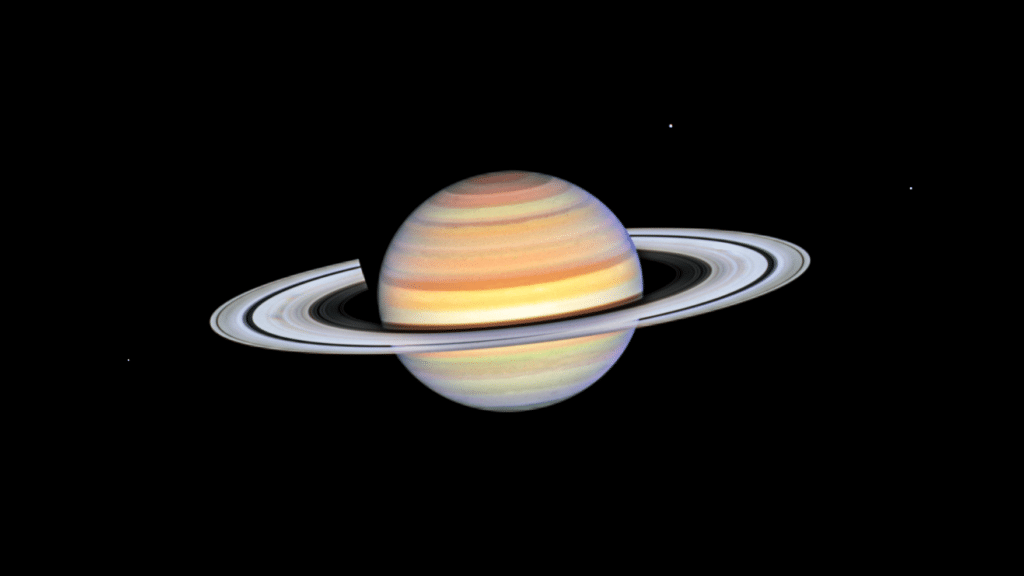The Hubble Space Telescope has provided us with yet another marvel. On October 22, from an astonishing distance of 850 million miles, NASA’s iconic telescope captured an image of Saturn, revealing a mysterious and ephemeral phenomenon known as ring spokes. These transient features, rotating alongside the planet’s iconic rings, appear ghostlike and last only for a few rotations around Saturn.
The phenomenon of Saturn’s spokes is not new to the scientific community. It was first documented by NASA’s Voyager 2 in 1981 and observed again by the Cassini orbiter during its 13-year mission, which concluded in 2017. What makes these latest observations particularly intriguing is the clarity and detail with which Hubble’s ultra-sharp vision has captured them.
Hubble’s ongoing annual observations of Saturn, part of the Outer Planets Atmospheres Legacy (OPAL) program that began nearly a decade ago, aim to monitor weather changes on all four gas-giant outer planets. These observations have revealed that the appearance of the spokes is seasonally driven. Initially detected in OPAL data in 2021, they were only seen on the morning (left) side of the rings. However, long-term monitoring indicates variations in the number and contrast of the spokes with Saturn’s seasons. Like Earth, Saturn is tilted on its axis and experiences seasons that last approximately seven years.
“We are heading towards Saturn equinox, when we’d expect maximum spoke activity, with higher frequency and darker spokes appearing over the next few years,” says Amy Simon, the OPAL program lead scientist at NASA’s Goddard Space Flight Center, in a statement.

This year’s images show these elusive structures on both sides of the planet, spinning around the giant world. Their size is deceptive; despite appearing small against the backdrop of Saturn, they can stretch longer than Earth’s diameter!
“The leading theory is that spokes are tied to Saturn’s powerful magnetic field, with some sort of solar interaction with the magnetic field that gives you the spokes,” explained Simon. The theory posits that during the equinox on Saturn, when the planet and its rings are less tilted away from the Sun, the solar wind might more forcefully interact with Saturn’s magnetic field, stimulating the formation of spokes. Planetary scientists believe that this interaction might generate electrostatic forces that levitate dust or ice above the ring to form the spokes. However, even after decades of study, no theory perfectly predicts their formation.
The ongoing observations by the Hubble Telescope may eventually unlock the secrets of these mysterious spokes. As we continue to gaze into the vastness of space, each new discovery like this not only deepens our understanding of the universe but also reminds us of the endless wonders it holds.











